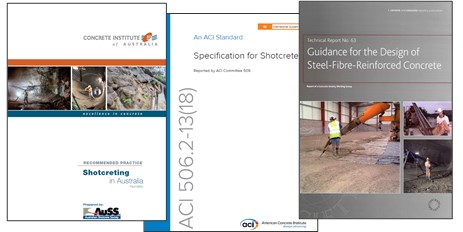STANDARDSGUIDELINES
Shotcrete, a versatile construction technique widely used in Australia for various applications, relies on adhering to industry-specific standards and guidelines to ensure safety, quality, and durability. The Australian Shotcrete Society (ASS) works closely with industry professionals to establish and promote these standards. Here, we provide an overview of some key standards and guidelines that are crucial for shotcreting projects in Australia.

AUSTRALIANSTANDARDS
AS 3600 - Concrete Structures
AS 3600, titled "Concrete Structures," is a fundamental standard that sets the requirements for the design and construction of concrete structures in Australia. It includes provisions for the design, materials, construction, and durability of shotcrete applications. Engineers and contractors involved in shotcreting projects should adhere to the relevant sections of AS 3600 to ensure that shotcrete structures meet safety and performance criteria.
AS 1379 - Specification and Supply of Concrete
AS 1379 outlines the specifications for the supply of concrete in Australia. While it primarily pertains to cast-in-place concrete, many of its provisions are applicable to shotcrete as well, especially regarding the quality and testing of concrete ingredients like cement, aggregates, and water. Ensuring that shotcrete ingredients conform to AS 1379 helps maintain consistency and quality in shotcrete mixes.
AS 3972 - Portland and Blended Cements
AS 3972 specifies the requirements for Portland and blended cements used in concrete, including shotcrete. It defines different classes of cements and their properties, which can impact the performance and durability of shotcrete. Proper cement selection according to AS 3972 is essential for shotcrete mix designs.
SHOTCRETEGUIDELINES
The Australian Shotcrete Society provides additional guidelines and best practices specific to shotcreting. These guidelines are valuable resources for shotcrete professionals and cover a range of topics, including:
Mix Design Guidelines
The ASS offers guidance on developing shotcrete mix designs that consider factors such as strength, workability, durability, and environmental conditions. These guidelines help ensure that shotcrete meets project-specific requirements.
Quality Control and Testing
To maintain shotcrete quality, the society offers recommendations on quality control measures, including material testing, mix consistency checks, and adherence to specified procedures during application. These measures are essential to achieving reliable shotcrete results.
Safety Protocols
Safety is paramount in shotcreting. ASS guidelines highlight safety protocols and best practices to protect workers and ensure the safe operation of shotcrete equipment and machinery.
Environmental Considerations
Shotcreting projects often occur in sensitive environmental settings. The society's guidelines provide insights into minimizing the environmental impact of shotcrete applications, such as erosion control and sustainable material choices.
INTERNATIONALSTANDARDS
In addition to Australian standards, shotcrete professionals may also refer to international standards such as those established by the American Concrete Institute (ACI) or the European Federation of National Associations (EFNARC) for guidance and best practices.
It's important to note that shotcrete projects may have specific requirements, and engineers, contractors, and shotcrete professionals should always consult the relevant standards, guidelines, and project specifications to ensure compliance and the successful execution of shotcrete applications in Australia.
For detailed information and updates on shotcreting standards and guidelines, as well as resources and support for shotcrete professionals, consider becoming a member of the Australian Shotcrete Society. Membership provides access to the latest industry knowledge, networking opportunities, and ongoing education to stay at the forefront of shotcreting technology and practices in Australia.


